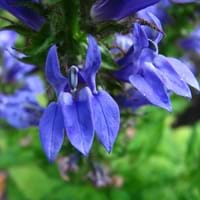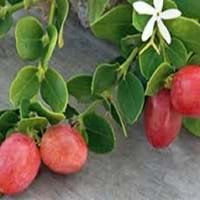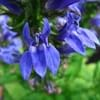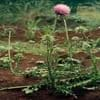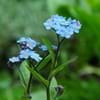Life Span
Annual
Perennial
Type
Flowering Plants, Shrubs
Fruit
Origin
America
Central Asia, Southern Asia, Western Ghats, India
Types
Lobelia aberdarica, Lobelia leschenaultiana, Lobelia canbyi
congesta, paucinervia
Habitat
Open areas, River side, Woods
Fertile bottom land, moist forests, Temperate Regions, Tropical Forests
USDA Hardiness Zone
4-9
Not Available
Sunset Zone
A1, A2, A3, H1, H2, 1a, 1b, 2a, 2b, 3a, 3b, 4, 5, 6, 7, 8, 9, 10, 11, 12, 13, 14, 15, 16, 17, 18, 19, 20, 21, 22, 23, 24
Not Available
Habit
Cushion/Mound-forming
Upright/Erect
Flower Color
Blue, Red, Violet, White
Pale White, White
Flower Color Modifier
Bicolor
Bicolor
Fruit Color
Not Available
Purple, Black
Leaf Color in Spring
Dark Green
Green
Leaf Color in Summer
Green
Green
Leaf Color in Fall
Green
Green
Leaf Color in Winter
Not Available
Light Green
Plant Season
Fall, Summer
Spring, Summer, Fall
Sunlight
Full Sun, Partial shade
Full Sun, Partial Sun, Partial shade
Type of Soil
Well drained
Loam
The pH of Soil
Acidic
Acidic, Neutral, Alkaline
Soil Drainage
Well drained
Well drained
Bloom Time
Early Fall, Early Summer, Late Summer, Mid fall, Mid Spring
Spring
Tolerances
Not Available
Drought
Where to Plant?
Container, Ground, Pot
Ground
How to Plant?
Seedlings
Seedlings, Stem Cutting
Plant Maintenance
Medium
Medium
Watering Requirements
Form a Soil ring to water efficiently, Prefer drip-irrigation instead of Over-head watering, Requires watering in the growing season, Use Mulches to help prevent water loss during hot and windy weather, Water twice a day in the initial period
Keep the ground moist but not water-logged
In Summer
Lots of watering
Lots of watering
In Spring
Moderate
Moderate
In Winter
Average Water
Average Water
Soil pH
Acidic
Acidic, Neutral, Alkaline
Soil Type
Well drained
Loam
Soil Drainage Capacity
Well drained
Well drained
Sun Exposure
Full Sun, Partial shade
Full Sun, Partial Sun, Partial shade
Pruning
Cut or pinch the stems, Prune after flowering, Prune to control growth, Remove dead or diseased plant parts, Remove deadheads
Prune if you want to improve plant shape, Remove dead leaves
Fertilizers
All-Purpose Liquid Fertilizer
Compost, fertilize in growing season
Pests and Diseases
Botrytis Blight, Crown rot, Pythium rot, Stem spot
Aphids, Earwigs, Insects, Mildew, Red blotch, Rust, sawflies
Plant Tolerance
Drought
Dry soil, Heat And Humidity
Flowers
Yes
Insignificant
Flower Petal Number
Single
Single
Foliage Texture
Fine
Medium
Foliage Sheen
Matte
Matte
Attracts
Birds, Hummingbirds
Birds, Butterflies, Fruit Bats
Allergy
coma, convulsions, Diarrhea, exhaustion, Nausea, salivation, Vomiting, weakness
Eczema, Mouth itching, Throat itching
Aesthetic Uses
Beautification, Bouquets, Showy Purposes, Used for decorating walls, fences, gates, hedges, etc.
Not Available
Beauty Benefits
Not Available
good for lips, Remove blemishes
Environmental Uses
Air purification
Air purification, Food for animals, Food for birds, soil stabilisation
Medicinal Uses
Asthma, Bronchitis, Croup
Anemia, Diuretic, Potassium, Rich in Iron, Vitamin C
Part of Plant Used
Leaves, Seeds
Fruits, Leaves
Other Uses
Showy Purposes
Added to salads, Cosmetics, Culinary use, Used as a nutritious food item, Used As Food, Used for its medicinal properties
Used As Indoor Plant
Yes
No
Used As Outdoor Plant
Yes
Yes
Garden Design
Bedding Plant, Bog Garden, Edging, Foundation, Hanging Basket, Houseplant, Mixed Border, Rock Garden / Wall
Edible, Fruit / Fruit Tree, Hedges
Botanical Name
Lobelia laxiflora
Carissa carandas
Common Name
Lobelia
Black Currant
In Hindi
Lobelia
करोंदा, कालि मैना
In German
Lobelie
Carandas
In French
Lobelia
karondas
In Spanish
Lobelia
karondas
In Greek
λοβηλία
karondas
In Portuguese
Lobélia
karondas
In Polish
Lobelia
karondas
In Latin
Lobelia
karondas
Phylum
Anthophyta
Magnoliophyta
Class
Dicotyledonae
Magnoliopsida
Order
Asterales
Gentianales
Family
Campanulaceae
Apocynaceae
Clade
Angiosperms, Asterids, Eudicots
Angiosperms, Asterids, Eudicots
Tribe
Not Available
Not Available
Subfamily
Lobelioideae
Not Available
Number of Species
Not Available
Importance of Lobelia and Karonda
Want to have the most appropriate plant for your garden? You might want to know the importance of Lobelia and Karonda. Basically, these two plants vary in many aspects. Compare Lobelia and Karonda as they differ in many characteristics such as their life, care, benefits, facts, etc. Every gardener must at least have the slightest clue about the plants he wants to plant in his garden. Compare their benefits, which differ in many ways like facts and uses. The medicinal use of Lobelia is Asthma, Bronchitis and Croup whereas of Karonda is Anemia, Diuretic, Potassium, Rich in Iron and Vitamin C. Lobelia has beauty benefits as follows: Not Available while Karonda has beauty benefits as follows: Not Available.
Compare Facts of Lobelia vs Karonda
How to choose the best garden plant for your garden depending upon its facts? Here garden plant comparison will help you to solve this query. Compare the facts of Lobelia vs Karonda and know which one to choose. As garden plants have benefits and other uses, allergy is also a major drawback of plants for some people. Allergic reactions of Lobelia are coma, convulsions, Diarrhea, exhaustion, Nausea, salivation, Vomiting and weakness whereas of Karonda have Eczema, Mouth itching and Throat itching respectively. Having a fruit bearing plant in your garden can be a plus point of your garden. Lobelia has no showy fruits and Karonda has no showy fruits. Also Lobelia is flowering and Karonda is not flowering . You can compare Lobelia and Karonda facts and facts of other plants too.
